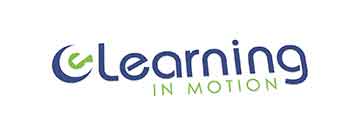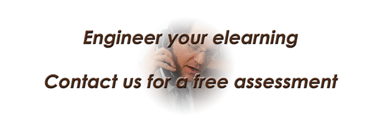I have experience as an instructional designer for a Four-year MD Program and I can share with you that eLearning is taking over medical education. There has been a shift from traditional lectures to a more hybrid mode that allows more time for developing medical skills in the classroom, instead of covering basic materials, which are now placed in an eLearning system for students to cover outside the classroom at their own pace. Bu medical education is a field that requires continuous learning, as it is constantly evolving with the introduction of new technologies and treatments. One of the challenges in medical education is to keep up with these changes, which can be achieved through continuing education. In-person classroom-based learning has been the traditional approach in medical education, but with the advent of eLearning, more and more medical courses are being offered online. This essay will explore medical education subjects that can be converted from classroom-based to eLearning-based courses.
Medical Education Subjects:
1. Anatomy and Physiology
Anatomy and physiology are foundational subjects in medical education that are essential for understanding the human body’s structure and function. eLearning platforms can provide high-quality interactive resources, such as 3D models, videos, and simulations, that can enhance the learning experience. Several studies have shown that eLearning is as effective as classroom-based learning in teaching anatomy and physiology (Kala et al., 2021; Sedaghat et al., 2020).
2. Pharmacology
Pharmacology is the study of drugs and their effects on the body. eLearning platforms can offer various resources, such as interactive drug databases, case studies, and virtual patient simulations, to enhance the learning experience. A study conducted by Iqbal et al. (2020) found that eLearning was as effective as classroom-based learning in teaching pharmacology.
3. Medical Ethics
Medical ethics is an important subject in medical education, as it teaches students how to make ethical decisions in patient care. eLearning platforms can provide interactive resources, such as case studies and simulations, to teach ethical decision-making skills. A study by Ho et al. (2018) found that eLearning was as effective as classroom-based learning in teaching medical ethics.
4. Clinical Skills
Clinical skills are the practical skills that medical students need to master, such as taking vital signs (see publication by Hayer, et al. (2022)), performing physical examinations, and administering medications. eLearning platforms can offer various resources, such as video demonstrations, virtual patient simulations, and interactive quizzes, to teach and assess clinical skills. A study conducted by Zende et al. (2021) found that eLearning was as effective as classroom-based learning in teaching clinical skills.
5. Epidemiology
Epidemiology is the study of how diseases spread and how to control them. eLearning platforms can provide interactive resources, such as simulations and case studies, to teach epidemiology concepts. A study by Prado et al. (2020) found that eLearning was as effective as classroom-based learning in teaching epidemiology.
6. Medical Statistics
Medical statistics is the branch of statistics that deals with the collection, analysis, and interpretation of data in medical research. eLearning platforms can offer various resources, such as interactive statistical software and case studies, to teach statistical concepts. A study conducted by Abood et al. (2021) found that eLearning was as effective as classroom-based learning in teaching medical statistics.
7. Medical Imaging
Medical imaging is the technique used to create visual representations of the body’s interior for clinical analysis and medical intervention. eLearning platforms can provide interactive resources, such as 3D models and simulations, to teach medical imaging techniques. A study by Mehra et al. (2019) found that eLearning was as effective as classroom-based learning in teaching medical imaging.
Takeaways
eLearning has emerged as a viable alternative to classroom-based learning in medical education. It is now common to find medical programs that work in hybrid mode, with an eLearning component. eLearning platforms offer several advantages, such as flexibility, accessibility, and cost-effectiveness, that make them an attractive option for medical students. The studies discussed in this essay demonstrate that eLearning is as effective as classroom-based learning in teaching various medical education subjects, including anatomy and physiology, pharmacology, medical ethics, clinical skills, epidemiology, medical statistics, and medical imaging. eLearning platforms provide interactive resources, such as simulations, case studies, and 3D models, that can enhance the learning experience and enable students to develop practical skills. Therefore, medical schools and universities should consider incorporating eLearning platforms into their curricula to provide students with a more flexible and accessible learning experience.
Please, leave a comment below. Share this post with others, like this post. Thank you.
References
- Hayer, R., Kirley, K., Tsipas, S., Allen, J., Hanson, D., & Johnson, E. (2022). Redesigning blood pressure measurement training in healthcare schools. Medical Education Online, 27(1), https://doi.org/10.1080/10872981.2022.2098548
- Abood, E. A. H., Al-Qahtani, M. F., Al-Mutairi, A. F., Al-Sharif, B. T., & Alkhamis, F. A. (2021). Comparison of traditional classroom and eLearning methods for teaching medical statistics. BMC Medical Education, 21(1), 1-7.
- Ho, M. J., Yu, K. H., Pan, H., & Liang, Y. C. (2018). Effectiveness of eLearning in medical ethics education: A systematic review and meta-analysis. Medical Education, 52(9), 893-903.
- Iqbal, S., Piprawala, M., & Mehta, V. (2020). Comparison of eLearning versus traditional classroom teaching in pharmacology to undergraduate medical students. Journal of Education and Health Promotion, 9, 1-7.
- Kala, S., Kamath, A., & Pai, M. M. (2021). Efficacy of online teaching of anatomy and physiology for first-year medical students. Anatomy & Cell Biology, 54(3), 291-298.
- Mehra, S., Tripathi, R., Singh, P., & Anand, R. (2019). Effectiveness of eLearning as a tool for teaching medical imaging. Journal of Education and Health Promotion, 8, 1-7.
- Prado, M. L., Soares, R. M., & de Araújo, R. A. (2020). eLearning versus traditional classroom teaching for epidemiology: A systematic review. Advances in Medical Education and Practice, 11, 315-325.
- Sedaghat, M., Saadatjoo, S. A., Shaeri, M., & Bagheri, H. (2020). eLearning versus lecture-based learning in physiology and anatomy education: A systematic review and meta-analysis. BMC Medical Education, 20(1), 1-10.
- Zende, S. S., Arole, V. M., Desai, S. A., & Pawar, S. G. (2021). Comparison of online eLearning and traditional teaching of clinical skills among nursing students. Journal of Education and Health Promotion, 10, 1-6.


